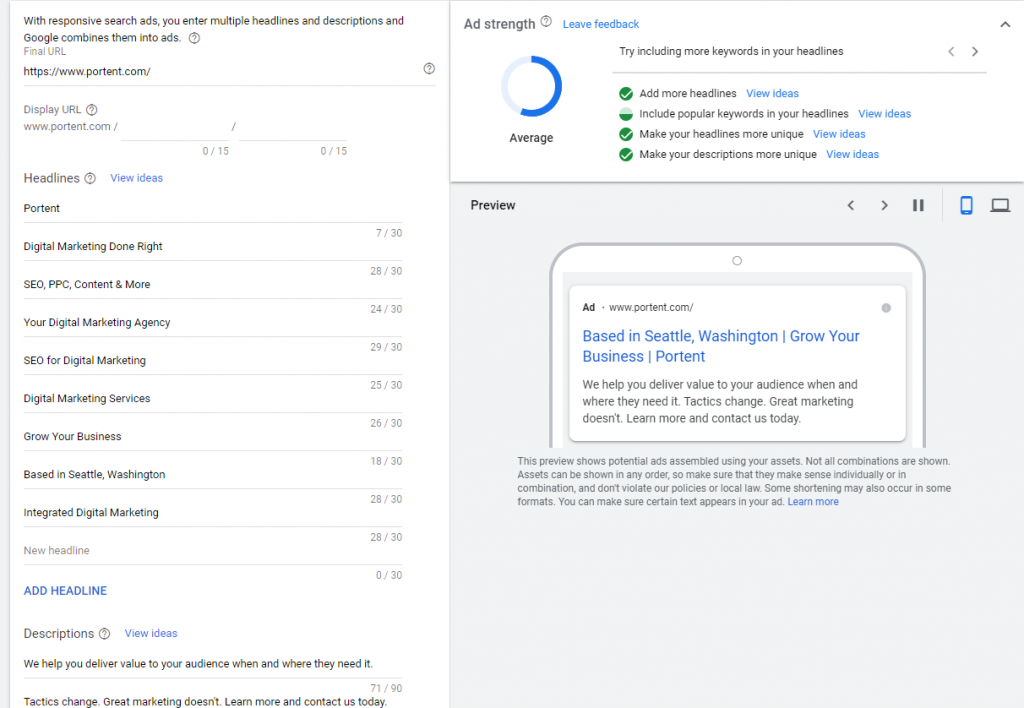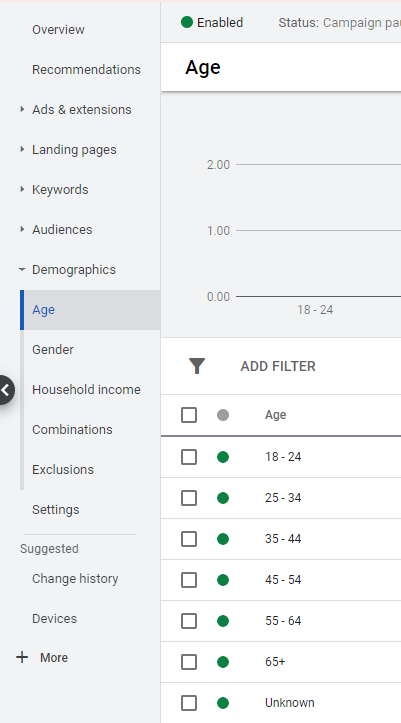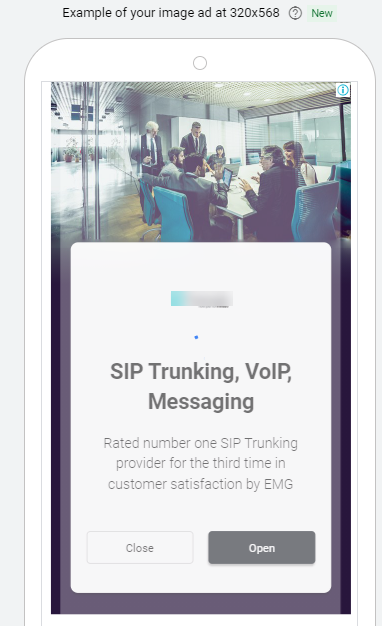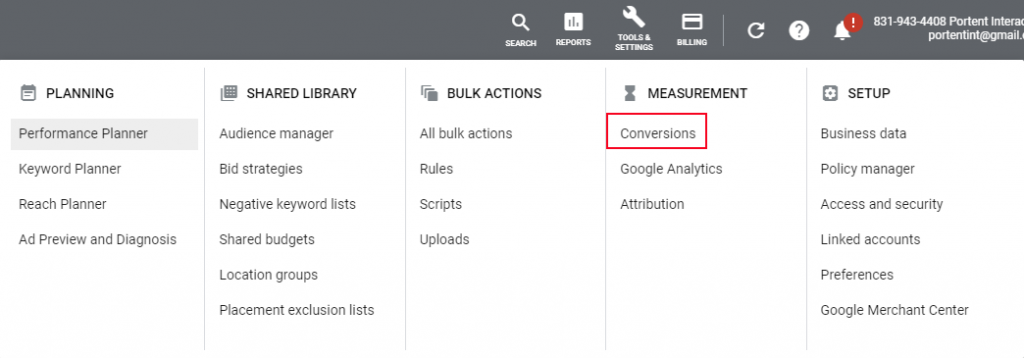Ah, Spring is in the air. The sun is out, birds are chirping, and with some encouraging news regarding the pandemic, businesses are beginning to think about spending money on digital marketing again. Maybe you haven’t been running ads since March 2020, maybe you’ve been running at a reduced rate, or maybe you haven’t slowed down at all. Regardless, now is the perfect time to ask yourself, “when is the last time I’ve audited my Google Ads account?”
I’m not talking about the last time you added a handful of keywords or when you last launched a new campaign. When’s the last time you went through your account top-to-bottom and checked everything? Even if you got the full checkup at the beginning of 2020, if this wasn’t part of your 2021 planning, it’s time to audit your account again.
Here are five things you should be sure to review during your next Google Ads audit.
1. Responsive Search Ads (RSAs)
Google started rolling out responsive search ads in 2018, and it quickly became the default ad option in Google Ads. You can still create expanded text ads (and you should), but RSAs are the primary ad option.

Responsive search ads use the same general ad structure, three headlines of 30 characters and two descriptions of 90 characters. Still, instead of only having those three headlines and two descriptions, you can input up to 15 headlines and four descriptions. Google will then test those assets in various ways and see which combinations perform the best.

RSAs are an easy way to utilize multivariate testing without manually testing different versions yourself. It’s always nice when you can let Google do the work for you.
2. Bid Modifiers for All Devices and Demographics
Bid modifiers have been around for a long time, but it’s something that is often neglected for long periods of time. Bid modifiers are something that you should take a look at monthly and make adjustments based on the most recent data.

Check your campaign data segmenting conversion metrics by both device and demographic. You might have some preconceived notions of what segments perform better or worse, but the data might indicate others. Set bid modifiers accordingly on the campaign level based on these metrics.
3. Ad Scheduling
Google Ads has a ton of different ways you can parse information, and you’d be doing yourself a disservice if you didn’t utilize them to their full potential. One way you can do this is by setting up day-parting in the account’s ad schedule section. Google doesn’t automatically segment the data based on day, so we recommend manually segmenting it into six-hour intervals for the week.

Segmenting it this way gives you an incredibly granular view of how the account is performing each day. And after you have enough data, you can use bid modifiers to get more aggressive during your highest performing times.
4. Responsive Display Ads (RDAs)
As the name suggests, responsive display ads are the same as responsive search ads but for the display network. You add different images, logos, headlines, and descriptions, and Google shows those in all different variations to determine which combination performs best.

RDAs are eligible for more placements than static ads to lead to higher levels of traffic and conversion. If you don’t use them already, they are a great thing to test in your account.
5. Conversions
In your account’s tools section, go through your conversions and ensure all settings are up-to-date and that no goals are obsolete. Google Ads optimizes towards whatever conversion you’re counting in “Conversions,” so ensuring you’re tracking the most relevant goals is incredibly important.
To check these settings, go into the “Tools” tab in the upper right of your Google Ads account, and under the “Measurement” tab, click “Conversions.” In there, you’ll see all conversions that Google Ads is currently tracking for you. Look at the column called “Include in “conversions” and switch any conversions you want Google to optimize towards to “Yes.” Anything you don’t want to optimize towards, switch to “No.”

If you don’t remember adjusting any of your Google Ads conversion settings this year, make sure to check this piece sooner rather than later.
Next Steps
These are just some of the new things to take into consideration when auditing your Google Ads account. There are still the vitally-important, traditional elements to review as well, such as campaign and ad group structure, keyword selection, and so forth.
If you feel like you may be overlooking or under-using any of the tools or best practices here, make time to take that big step back from daily optimization to truly audit your Google Ads account before we get too far into the year.










If you can, have someone else do this for your account (might be easier to get buy in if you do it for theirs). A fresh set of eyes can see things that you can’t, even if you are disciplined and going through everything with a fine toothed comb. They also bring a completely different set of experience to your account so while you may have not seen success with a feature or extension, your audit partner might have done it in a different way that would apply to your account. Share the love, share the knowledge.